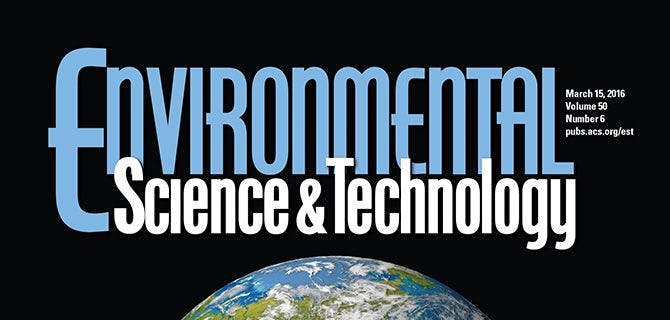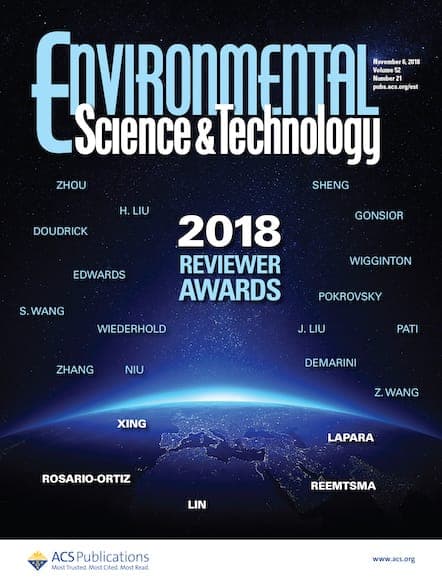The following editorial originally appeared in Environmental Science & Technology. About 50 years ago, the astronaut William Anders took a photograph that changed humanity. The image that came to be known as “Earthrise” shows our blue planet emerging from the shadow of the moon. At a time when civilization was struggling with the threats posed […]

About 50 years ago, the astronaut William Anders took a photograph that changed humanity. The image that came to be known as “Earthrise” shows our blue planet emerging from the shadow of the moon. At a time when civilization was struggling with the threats posed by pollution, nuclear war, and overuse of resources, our first glimpse of Earth from space allowed us to reflect on our precarious situation. The fact that the photograph was made possible by a new application of the missiles that threatened our very existence made it clear that we had the power to shape our destiny through the responsible use of technology.
Two years before the influential photo was taken, the American Chemical Society launched a journal that changed the way that researchers think about the environment. At a time when researchers studying humanity’s impact on the planet lacked a home, Environmental Science & Technology provided chemists, engineers, and environmental scientists with a forum for sharing the latest research developments on chemicals that were affecting water, air, soil, and human health. By providing a dedicated publishing venue for researchers from disparate disciplines, the journal was instrumental to the successes of the pioneering community seeking solutions to some of the most pressing problems of the day.
Reading the skinny volumes from the early 1970s, it is clear that the journal was an unprecedented experiment. Back when most environmental research consisted of empirical studies designed to support the optimization of pollution control devices, ES&T brought the rigor of hypothesis-driven physical science to environmental research. Those early issues are stuffed with photos of researchers in thick-framed safety glasses and ads for gigantic mass specs and atomic absorption spectrometers. The tools developed to support the atomic age allowed environmental researchers to peer into a hidden world. In these early years, we learned that residues of atrazine washed off agricultural fields. We discovered that it was possible for toxic metals in aerosols and street runoff to contaminate coastal waters. And we applied new treatment technologies, such as reverse osmosis membranes and catalytic converters, to control pollution at its sources.
During our second decade, we pioneered a new science to predict the fate and transport of contaminants. Borrowing theories developed by physical chemists and pharmacologists, we described the partitioning of organic chemicals into biota. We created multimedia fate models that could accurately predict the movement of persistent organic pollutants in air, water and soil. We applied the latest findings from inorganic chemistry to describe mineral dissolution and speciation of metals in the aquatic environment. With these and other powerful new ideas, we trained a generation of environmental professionals who remediated hazardous waste sites and informed society about the risks associated with the unchecked release of industrial chemicals.
By the time we reached our third decade, our credibility and influence had grown. We were publishing about three times as many papers as we had in the late 1970s. As we matured, we discovered that not all problems could be solved through application of physical sciences. By extending the journal’s coverage to policy, ecotoxicology and other related disciplines, ES&T led the community into new areas and provided researchers with approaches for solving complex environmental problems. Our expanded community repurposed technologies developed by medical researchers to create in vitro bioassays and techniques for elucidating the complex world of environmental microbiology. We also leveraged advances in computing as we developed sophisticated models that coupled chemistry and physics to policies for controlling emission sources and reducing air pollution.
The past 20 years have witnessed explosive growth in our field as global development has exacerbated pollution in rapidly industrializing countries. With satellites and sophisticated mass spectrometers we now document the movement of pollutants across geopolitical boundaries and learn that no place on the planet remains pristine. During this period, the need to address climate change also has become central to efforts to protect the planet. As a result, we now publish about three times the number of papers that we did in the 1990s and have expanded our coverage to issues such as resource recovery and technologies for reducing greenhouse gas emissions.
More than 250 million words have been published in the journal since the first edition was printed on January 1, 1967. Despite our many successes, we still have an important mission to accomplish. Key questions about the environment remain to be answered. Building upon the knowledge of our predecessors and adopting the latest technologies, we continue to advance our capabilities and expand our coverage to emerging fields of importance. This is the fulfilling work that members of our ever-growing community engage in every day. But even with our growing strength and sophistication the challenge sometimes seems insurmountable.
The cover of the current edition of ES&T harkens back to Earthrise. It is there to remind us of the underlying purpose of those first 49 volumes of the journal. Today, an image of the earth from space has a different meaning than it did in 1968. The technological revolution that we are part of has made it possible to view our place in the cosmos with greater clarity. As a result, we no longer see the earth as a lonely and vulnerable place. Instead, the earth’s image represents a connected world grappling with the challenge of the Anthropocene. Yet, equipped with technology that was unimaginable five decades ago, we still have not answered the question inherent in Earthrise: Can humanity find the wisdom, tap the creative talents of its people, and find the moral strength needed to protect the world that we will leave to our children? I sure hope so.
